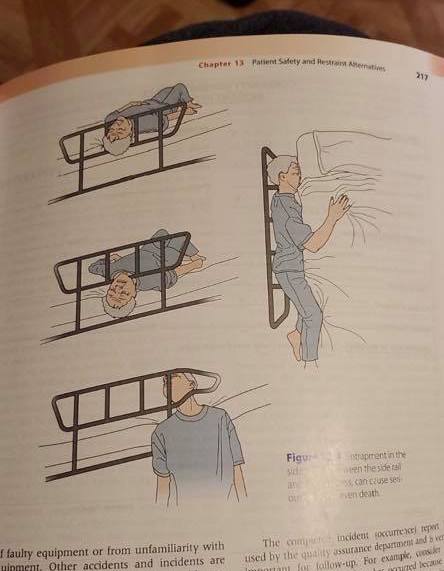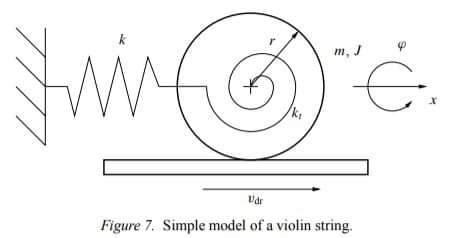
Now learning is more important than ever. Learn to at least know, learn to develop, learn to be a better human being. Also, now knowlegde is more accessible than ever, but I would certainly say only to an extent. (We still have to pay a fee which I wouldn't consider cheap to read research articles.) What I meant by accessible is that one does not need to go to school or spend thousads of dollars to study in college, but he or she can sit at home and still be able to gain knowledge from various sources. I am refering to YouTube, Facebook and other social media. I wish to exclude serious institutional website since they are, obviously, serious and would leave no space to talk about the phenomenon of memes in educational context, though they are truly valuable in terms of contents. However, as much as the education environment is rigourous, stressful and unforgiving, sometimes educators, or I here I would use the words researchers scientists interchangeably, accidentally create a resevoir for internet humors, which can even be scientifically correct and insightful. I just found this observation fascinating, and I shall talk about it now.
Rarely do I have an observation that is original, not even mention revolutionary. Nonetheless, I can firmly say that I notice the manifestation of internet humor before encountering any formal research, so I think I can safely say at least the thought is original to me. There have already been a number of studies about the implications of memes as a tool (Ashipaoloye, 2013; Stebbins, 2012) and destressor (Purnama, 2017) to be used by educators in teaching English (Vignesh, David & Mallika, 2019), mathematics (Bini & Robutti, 2019), physics (Peterson, 1998), law (Gordon, 1992) or education in general (Torok, McMorris & Lin, 2004), all of which came to a supporting conclusion of humor, if used appropriately, could promote students' attention, knowledge acquisition and retention. Of course, it would be trivial, if not meaningless, if the teachers were those who perceived humor as a necessity in academic environment, since it is the learner to whom the teaching is directly applied. Theoretical studies aside, I shall politely cite a research by Torok, McMorris & Lin in 2004, which I believe was well-conducted, discussing students' perceptions in terms of incorporating humor into teaching. As expected (though the phrase "as expected" is packed with biases), some forms of humor are beneficial, while others may have the potentiality to backfire (e.g., distracting, irrelevant) or even trigger agressive arguments and presonal offence. Collectively speaking, most students stated they prefered the use of humor, specifically funny stories/comments, jokes and professional humor. On one hand, it is apparent for jokes and comments to have possitive effects on students emotionally; on the other hand, I truly think that profession-related contents can even contribute to the cognitive development for that area, since these jokes require the ability to laterally understand, react and to certain degree, analyze and scrutinize the memeic meanings behind them. Having said so, depite the optimistic results from the pedegogical use of humor, it should not overshadow or overtake the actual teaching itself as the memes often contain only narrow and superficial scope of knowledge (this is also what differentiating between a bad, a good and an exceptional meme).
One thing that I don't really understand and sometimes even be infuriating about is the oppression against the use of humorous content in teaching. Comedy is almost always viewed as and anti-educational entity that only provokes distraction, and even as an indicator of not devoting their life to studying for lower-achieving students. Students making jokes is considered irreverent. Back in Vietnam, I rarely see a teacher make jokes during classes. I did not attend the University of Education there so I cannot really say about how they teach future teacher. Nevertheless, I seems to me that the humor, and I may take the liberty to extend, the connection to younger generations through their lens of memes, is significantly lacking. The classroom often dead silent with the ambience of a furneral is no stranger. That makes me even more appreciate when the teacher crack a joke.
Believe it or not, YouTube is becoming a great repository for educational content. The platform quickly attracts educators as a place to share their knowledge, being incentivized by popularity, universality and profitability (if you get lucky). This may not have happened back in the day YouTube was newly-founded. Many ancient educational videos are often serious as seened in classroom: teacher talks, little-to-none interactions, time span of one to two hours on a single topic. The norm has slowly changed into the form of quick hard facts, increased viewer interactions and the content maybe multi-, inter- or trans-disciplinary. This is often seen by the video series of Brady Haran about various departments of science, including mathematics, physics, chemistry, computation, history. Moreover, creators can also have the opportunity to collaborate and discuss their point of view on certain subjects, which very dynamic interaction I have never seen before in old-school teaching videos.
Oftentimes the content portrays a fact, and (another) oftentimes the fact is either unknown by many, counterintutive or simply good to know. To facilitate click counts, a number of creators have employed the use of "clickbaits", under the forms of questions (e.g., "How hard is it to play guitar?"), exclamation (e.g., "The answer will surprise you!"), obscure–but not so obscure–jargons (e.g., "The Brachistochrone", or any law of physics), unusually formatted texts (see here), and surprisingly, a single word, preferably with a full stop (e.g., "Cow."). Unless the creator is only making videos for the sake of revenue, these videos often provide insightful information about the subject, and if well made, can be really be a tool for self-directed learning due to their relaxing and autonomous nature, which students/viewers can freely watch whenever they like (see Muller, 2008, he also has an educational channel called Veritasium). Back to the title. I just recently learnt about the Betteridge's law of headline, that being "Any headline that ends in a question mark can be answered by the word no". Hence, if the video posed a yes/no question, the answer would likely be "no". However, the informative values of Youtube educational videos are often at high regards, sometimes with the involvement of actual researchers and professors.
One thing I found impressive, and somewhat astounding, in these types of videos is the manners of commenters. Despite the memeic content that they share about the video, the discussion is led with respect and civility. On music videos, even for classical music which is considered classy, well-mannered and sophisticated (though I strongly against the elitism of classical music), one controversial comment could (probably) result in a heated debate with blasphemy. Maybe there are differences in regards to the audience of each field? Maybe. The discourse on the videos is usually initiated by, neither the creator nor the designated purpose of the video, but by the viewers who preceive the content as memeable and hilarious. Although it might be true that the presenter has employed the use of humor in the video, but there can also be comments talking about the actual professional subject (e.g., see Nepal's national flag). Not a single swear word under the comment section.
Diagrams are a great way to visualize raw data. Sometimes it is just a must, as no one would be expected to interpret a pile of numbers. (On a side note, I don't think tables are the best way to present data, though many papers still have a massive multiple-page-span table.) However, I am astonished with the level of creativity of some data representation examples (see Scietific diagrams that look like shitposts). Literally any field of science will have some instances of random diagrams that are, if taken out of context, memeable. These diagrams, similar to facts in videos that I previously mentioned, describe phenomena that are unknown, counterintuitive, obscure, or to analogize to make the terms more relatable and understandable. One thing to keep in mind is that very often the scientist is not an artist, and an artist would not be likely to understand sciences (my apologies for sterotyping). So the job of data representing is now left for the researcher, which is equivalent to "the blind leading the blind". The diagram is then made, and somehow the peer-reviewers and editors accept the manuscript and things start from there. The diagrams, or to generalize, all written formats/media are subjective to interpretation. No matter how well written (except for math maybe), the diagram can be understood differently by the readers as compared to the researchers. And when the interpretation is not what the researchers intended to be, plus the "artistic" characterisitics put into making the diagram, we now have a picture that vaguely defines/depicts a scientific phenomenon or a strange representation of an unclear one.



Sometimes it is not just the researchers input that makes the diagram memeable. I have to say that there are so many well-designed diagrams which are at the highest levels of informativity and insightfulness; it is only a little unfortunate that a diagram, since it's so specific and well-made, it resembles something else, or even nothing at all. The internet humor if the 21st-century generation can be seened as ironic and overused, evident in the emergence of dank memes, which contains little or no meanings at all. The comic aspects of those memes are often associated by the transformation of original contents into something ironic via the process of repeated compression and decompression, randomness and combination of obsolete or dead memes, etc. These diagrams have all of those traits: representing nothing if taken out of context, the unusual artistic values, the accidental representation of past existing memes. It is equally interesting seeing that depite the multilayered process of publishing an article, and knowing that there are always a person behind every making of a diagram, a meme is born out of this world from the most unexpected and improbable place: academia.